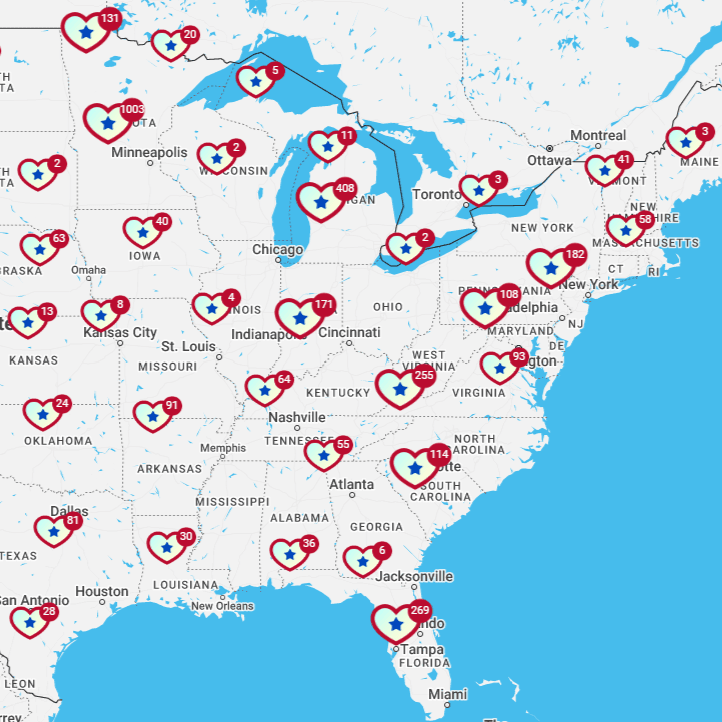
No Party Affiliation vs. Independent
What’s the difference between independent voters and No Party Affiliation voters? Though the two terms sound quite similar, there are subtle differences between them.
In this guide, we’ll explore what it means to be an independent or No Party Affiliation voter. We’ll also cover which states prefer which labels, as well as how these segments of voters are often misportrayed in mainstream media.
NPA vs. Independent: Definitions and Differences
No Party Affiliation (NPA) voters are those who do not declare their affiliation with any one political party when registering to vote. This term is similar to the labels “unaffiliated” and “non-partisan.” In general, “No Party Affiliation” is a formal designation given to voters during voter registration. The use of this label varies from state to state.
On the most basic level, “independent” may be seen as almost interchangeable with “No Party Affiliation.” Like NPA voters, independent voters are those who do not align with one of the major political parties.
In some states, “independent” is also a formal designation selected during voter registration. However, independent is generally a more colloquial term. Independent voters might identify with this label because they have rejected the two-party system of Republicans and Democrats, because they consider individual candidates more important than political parties when deciding who to vote for, or because they tend to swing back and forth between political parties. Voters might also register or affiliate with a third party, such as the Libertarian Party or Green Party, while still identifying as independent.
Independent voters might support an independent candidate, but also might support candidates of either of the two major parties representing their stances on crucial issues.
Similarities Between NPA and Independent
The following are similarities between No Party Affiliation and independent voters:
Outside the Two-Party System: Both No Party Affiliation and independent voters choose not to register as Republicans or Democrats. Individual voters may have unique reasons for choosing not to affiliate with the major parties, but their rejection of the two-party system is a common denominator.
Excluded from Closed Primaries: Ten states (Delaware, Florida, Kentucky, Maryland, Nevada, New Mexico, New York, Oregon, Pennsylvania, and Tennessee) have closed primary elections. In closed primaries, both independent and NPA voters are excluded from voting, unless they temporarily register with a major party. Additional states have semi-closed primaries, which have slightly different rules.
Diversity of Opinion: Another similarity between NPA and independent voters is that both groups are far from monolithic. Both labels include voters from across the political spectrum, from conservative to centrist to progressive.
Differences Between NPA and Independent
One of the main differences between NPA and independent voters comes down to the states they live in. Only certain states use the designation “No Party Affiliation.” Two examples include Florida and Delaware.
NPA Voters in Florida
Florida voter registration follows a closed primary system. When you file your Florida voter registration, you can choose to register for either of the major parties. Then, you can only vote in the primary elections of that party, but not the other. This means that NPA voters cannot participate in the two primary contests as each party determines its nominees.
Voters who register without a party affiliation can't vote in any party primaries, but do have the right to vote in general elections. Changing your voter registration in Florida to participate in a primary must happen a minimum of 29 days before the primary election.
Note that the state of Florida also currently recognizes 13 minor parties:
Boricua Party
Coalition With a Purpose Party
Conservative Party of Florida
Constitution Party of Florida
Ecology Party of Florida
Florida Forward Party
Florida Natural Law Party
Green Party of Florida
Independent Party of Florida
Libertarian Party of Florida
No Labels Party of Florida
Party for Socialism and Liberation - Florida
People’s Party
Voters who register with any of these minor parties will not be marked as NPA voters. Instead, their voter’s record will be marked with the abbreviation for the political party they have chosen.
As of March 31, 2024, there were a total of 3,533,149 No Party Affiliation voters in Florida.
No Party Voters in Delaware
Delaware is another state that uses a closed primary system. In Delaware, voters can either register with a political party or be marked as a “No Party” voter. As in Florida, only registered Republicans can participate in Republican primary elections, and only registered Democrats can participate in Democratic primary elections.
No Party voters who wish to participate in the 2024 primary elections could change their party affiliations any time before the last Saturday in May.
Note that the state of Delaware recognizes five minor parties, in addition to the Republican and Democratic parties:
Conservative Party of Delaware
No Labels Party
Independent Party of Delaware
Libertarian Party of Delaware
Non-Partisan Delaware
Voters who register with these parties are not marked as No Party voters.
As of May 1, 2024, the state of Delaware was home to 170,428 No Party voters, plus 25,936 voters who are currently labeled as No Party voters after registering to vote via Automatic Voter Registration.
Other Differences Between NPA and Independent
As you can see, the specific terminology used to describe voters who do not affiliate with a political party tends to vary state by state.
Other differences between the two terms include the public’s level of familiarity with each term; most Americans are more likely to understand what it means to be an independent voter, than to understand what it means to be an NPA voter. Voters who describe themselves as independent may also feel more passionately about their decision not to affiliate with either of the two major political parties.
Misconceptions About NPA and Independent Voters
There are quite a few common myths about No Party Affiliation and independent voters. As the number of independent voters increases, it becomes more and more crucial to understand the reality behind these misconceptions.
Misconceptions abound about independent voters, including the narrative that independents are always moderates or centrists. While some are moderates or centrists, independents range across the entire political spectrum, including conservatives, liberals, and many positions in between. Independent voters are hardly monolithic; many might share a disdain for the two-party system, but their diversity in beliefs, ages, and racial and ethnic backgrounds reflects the makeup of the broader population. The same holds true for No Party Affiliation voters, who may fall anywhere along the political spectrum.
Some also accuse NPA and independent voters of not caring about politics, being indecisive, or even being a part of a new aspect of national politics. All three of these claims are false. These voters have made the choice to stay out of hyperpartisanship, and they've been part of the country's elections for many cycles. George Washington himself even advocated strongly for independent politics that avoided a divisive party system.
Whatever you call them, voters who do not align with the major political parties have always been a part of the American narrative.
Join the Movement for Political Independence
Are you a No Party Affiliation or independent voter? GoodParty.org is building a nationwide community for independent, non-partisan, and unaffiliated voters. We’re here to empower independent voters and candidates to make a difference in their communities without caving to the interests of the two-party system.
You can get involved by joining GoodParty.org’s online community and learning about upcoming volunteer opportunities.
